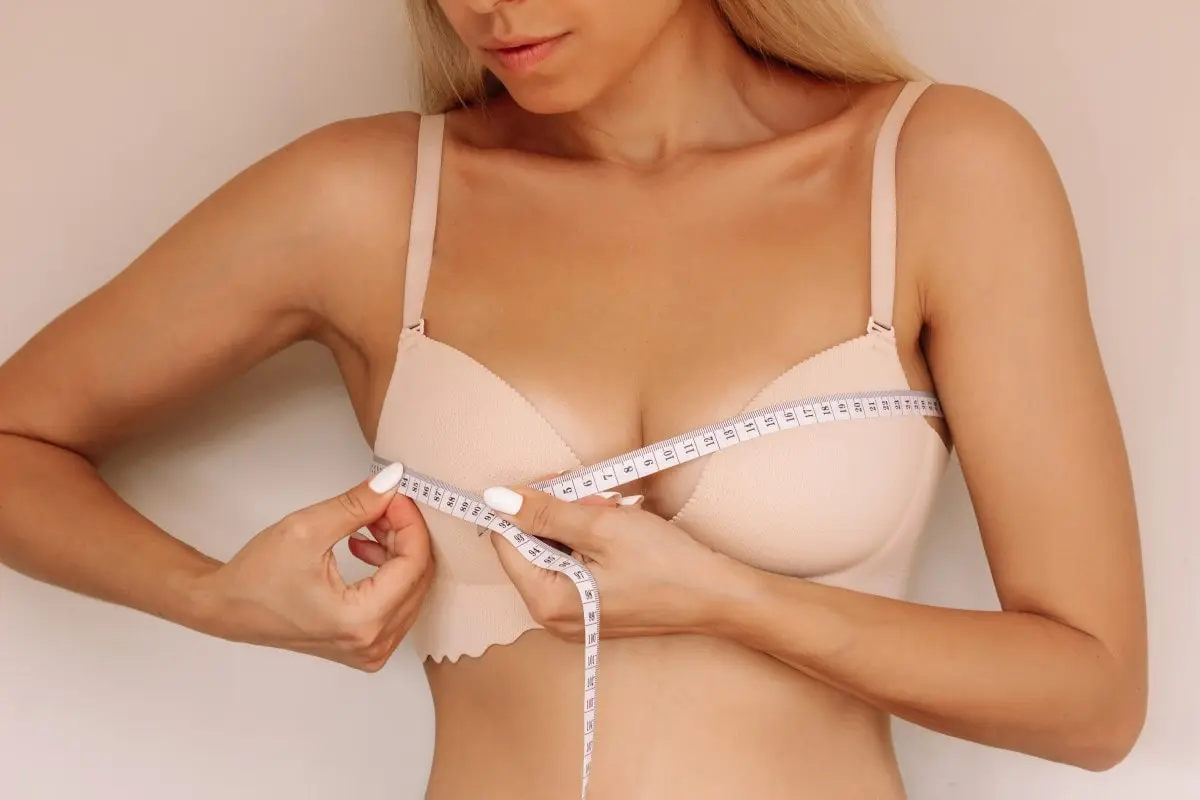Achieving a significantly augmented bust size, often characterized by “F cup breast implants,” represents a complex and highly specialized area within cosmetic surgery. Patients seeking such considerable volume increases typically present with unique anatomical considerations and aesthetic aspirations that demand a meticulous and data-driven approach from their surgeon. This pursuit extends beyond mere cup size designation, encompassing intricate factors such as tissue elasticity, chest wall dimensions, and the precise projection needed to create a harmonious and natural-looking silhouette. Successful outcomes at this scale are not merely about implant size; they are fundamentally dependent on the surgeon’s profound understanding of breast anatomy, advanced surgical techniques, and an evidence-based assessment of a patient’s individual physiological capacity to accommodate larger implants safely and effectively. This specialized knowledge is paramount for navigating the nuances associated with significant breast augmentation.
Table of Contents
What Implant Size Do You Need for an F Cup?
Determining the correct implant size for achieving an F cup requires understanding how breast implant sizes in cc correlate with final cup outcomes. The relationship between implant volume and cup size varies significantly based on individual chest anatomy and existing breast tissue.
F cup breast implants typically range from 500cc to 700cc, though this breast implant size range can extend beyond these parameters. The most common breast implant size for F cup results falls between 550cc to 650cc for average-framed patients. However, these measurements represent general guidelines rather than absolute standards.
Several factors influence the final cup size outcome:
- Chest width and ribcage dimensions
- Existing breast tissue volume
- Skin elasticity and stretch capacity
- Implant profile selection (low, moderate, or high)
- Implant placement (submuscular or subglandular)
The following breast implant size chart demonstrates typical volume ranges for various cup sizes:
| Cup Size | Implant Volume Range (cc) | Average Volume (cc) |
|---|---|---|
| DD | 350-450 | 400 |
| DDD/E | 450-550 | 500 |
| F | 500-700 | 600 |
| G | 650-800 | 725 |
Professional assessment remains essential for accurate sizing predictions. Surgeons utilise breast implant size calculators and 3D imaging systems to provide personalised recommendations. These tools consider individual anatomy alongside desired aesthetic outcomes.
F cup breast augmentation requires careful consideration of proportional balance. Patients with narrower chest walls may achieve F cup results with smaller volumes, whilst broader frames typically require larger implants. The breast augmentation size chart serves as a reference point, but individual consultation ensures optimal results.
Breast implant size comparison through sizers during consultation appointments allows patients to visualise potential outcomes. This hands-on approach provides realistic expectations for triple d breast implants and larger sizes, ensuring satisfaction with the final aesthetic result. Types of Breast Implants can help guide those considering f cup breast implants by illustrating how different materials and shapes affect appearance and feel. This insight is crucial for making informed decisions about achieving the desired look and comfort.
Are F Cup Implants Right for Your Body Type?
Body type assessment forms the foundation of determining implant suitability. Several anatomical factors directly influence whether F cup implants will achieve optimal aesthetic results and maintain proportion with your frame.
Frame size determines the overall compatibility with larger implants. Patients with broader shoulders and wider ribcages typically accommodate F cup volumes more naturally than those with petite frames. The shoulder-to-waist ratio creates visual balance, preventing the implants from appearing disproportionate to the torso.
Chest wall dimensions significantly impact implant placement and projection. Key measurements include:
- Chest width: Determines available surface area for implant positioning
- Intermammary distance: Affects cleavage appearance and implant spacing
- Chest wall curvature: Influences how implants sit against the ribcage
- Pectoral muscle development: Impacts submuscular placement options
Existing breast tissue volume affects the final appearance substantially. Patients with minimal natural breast tissue require careful evaluation, as F cup implants may create an obviously augmented appearance. Those with moderate existing tissue often achieve more natural-looking results.
Skin elasticity determines the tissue’s ability to accommodate significant volume increases. Poor skin quality may result in visible rippling or inadequate coverage of larger implants. Nipple position relative to the inframammary fold influences whether additional procedures become necessary.
Height considerations affect proportionality significantly. Taller patients generally accommodate F cup volumes better than shorter individuals, where the same implant size may appear overwhelming. Torso length similarly impacts the visual balance between breast size and overall body proportions.
Professional assessment evaluates these factors collectively to determine candidacy for F cup augmentation.
Comparing Silicone vs. Saline F Cup Implants: Which Is Better?
Silicone implants contain cohesive silicone gel that closely mimics natural breast tissue density and movement. The gel formulation provides superior tactile qualities, particularly important for larger volumes like F cup augmentations. Silicone implants maintain their shape consistently and demonstrate minimal rippling or wrinkling under the skin surface.
Saline implants utilise sterile saltwater solution encased within a silicone shell. These implants require smaller incisions during placement since surgeons fill them after positioning. The saline solution allows for precise volume adjustments during surgery, enabling optimal symmetry achievement. However, saline implants typically feel firmer than silicone alternatives, especially in larger sizes.
Regarding aesthetic outcomes, silicone implants generally produce more natural-looking results due to their gel consistency. The material’s viscosity prevents obvious implant edges from showing through skin, particularly beneficial for patients with minimal natural breast tissue. Saline implants can occasionally exhibit visible rippling, especially in the upper pole area of larger implants.
Durability considerations reveal important differences between implant types. Silicone implants demonstrate longer average lifespans, with many patients experiencing satisfaction for 15-20 years. Saline implants may require replacement sooner due to deflation risks, though immediate detection occurs if shell integrity fails since the body safely absorbs saline solution.
Surgical considerations include incision placement flexibility. Saline implants accommodate smaller incisions, reducing visible scarring. Silicone implants require larger incisions for insertion but offer superior long-term aesthetic outcomes. Both implant types require regular monitoring through clinical examinations to ensure ongoing safety and satisfaction.
The Cost of F Cup Breast Implants: What to Budget For
Understanding the financial commitment for F cup breast augmentation requires careful consideration of multiple cost components. Our extensive experience demonstrates that surgical fees represent the largest portion of total expenses, with significant variation between countries and individual surgeon expertise.
The following breakdown illustrates typical cost ranges for F cup breast implant procedures:
| Cost Component | Range (£) | Description |
|---|---|---|
| Surgeon’s Fee | £4,000-£7,000 | Professional surgical services |
| Facility Fee | £1,500-£2,500 | Operating room and equipment |
| Anaesthesia | £800-£1,200 | Anaesthetist services |
| Implant Costs | £800-£1,500 | Device and materials |
International cost comparisons reveal substantial savings opportunities. Turkey offers competitive pricing structures for identical procedures, with total costs typically ranging from £2,500-£4,000 compared to UK averages of £7,000-£12,000.
Additional expenses beyond primary surgical costs include:
- Post-surgical garments (£150-£300)
- Prescription medications (£50-£150)
- Follow-up consultations (£100-£200 per visit)
- Pre-operative medical clearance (£200-£400)
Financing options have become increasingly accessible, with many practices offering payment plans spanning 12-60 months. Insurance coverage remains limited for cosmetic procedures, though reconstruction cases may qualify for partial coverage. Geographic location significantly influences pricing, with London practices commanding premium rates compared to regional centres. Quality credentials and surgeon experience directly correlate with cost variations across different providers.
Potential Risks and Complications with F Cup Implants
F cup breast implants present specific risks and complications that require careful consideration. These larger implants carry increased potential for adverse outcomes compared to smaller sizes.
Capsular contracture represents one of the most significant complications with F cup implants. The formation of scar tissue around the implant can cause pain, distortion, and firmness. Studies indicate that larger implants have higher rates of capsular contracture due to increased tension on surrounding tissues.
- Implant displacement occurs more frequently with larger implants due to gravitational forces
- Bottoming out happens when the implant settles below the natural breast crease
- Lateral displacement causes implants to shift toward the armpits
- Symmastia involves implants moving toward the centre, creating a “uniboob” appearance
Musculoskeletal complications are particularly concerning with F cup implants. The additional weight places significant strain on the chest wall, shoulders, and spine. Patients frequently experience chronic back pain, neck discomfort, and shoulder grooving from bra straps.
Implant rupture poses serious risks, especially with larger devices. Silicone gel implants may experience silent ruptures that go undetected for extended periods. The greater volume of gel in F cup implants can lead to more extensive tissue damage if rupture occurs.
Rippling and palpability become more pronounced with larger implants, particularly in patients with thin skin or minimal breast tissue. The implant edges may become visible or palpable, creating an unnatural appearance.
Surgical complications include increased bleeding, prolonged healing times, and higher infection rates. The larger pocket required for F cup implants creates more surgical trauma and potential complications.
Revision surgery becomes necessary more frequently with larger implants, with studies showing higher rates of reoperation within ten years of initial placement.
Recovery and Healing After F Cup Breast Augmentation
The recovery timeline following F Cup breast augmentation follows a structured progression that ensures optimal healing and aesthetic outcomes. Understanding each phase enables patients to prepare adequately for their post-surgical journey.
Recovery Timeline:
- First 24-48 hours: Patients experience the most significant discomfort, with surgical drains typically removed within this period. Vital signs monitoring remains essential during this critical phase.
- Week 1-2: Swelling reaches its peak, whilst bruising begins to subside. Sutures are removed between days 7-14, depending on healing progress and surgical technique employed.
- Week 3-4: Patients can gradually resume light activities. The inflammatory response diminishes considerably, allowing better assessment of preliminary results.
- Month 2-3: Tissue integration accelerates, with implants settling into their final position. Capsular formation develops naturally around the prosthetic devices.
- Month 4-6: Final results become apparent as residual swelling completely resolves and breast tissue adapts to the augmented volume.
Post-operative care requirements include:
- Compression garments worn continuously for 6-8 weeks to minimise swelling and support healing tissues
- Prescribed analgesics administered according to pain management protocols, typically combining paracetamol with stronger medications
- Activity restrictions preventing upper body exercises for 6-8 weeks, with gradual reintroduction under medical supervision
- Regular follow-up appointments scheduled at specific intervals to monitor healing progression and identify potential complications
Sleep positioning requires patients to maintain an elevated, supine position for several weeks. This reduces gravitational stress on healing tissues and promotes proper circulation.
Our extensive experience demonstrates that patients who strictly adhere to post-operative instructions achieve superior aesthetic outcomes with minimal complications. The healing process demands patience, as final results reflect the complex biological processes of tissue integration and scar maturation.
CK Health Turkey performs this procedure with the highest quality equipment and experienced specialist plastic surgeons. For more details, contact our health coordinators by filling out the form on our website.



